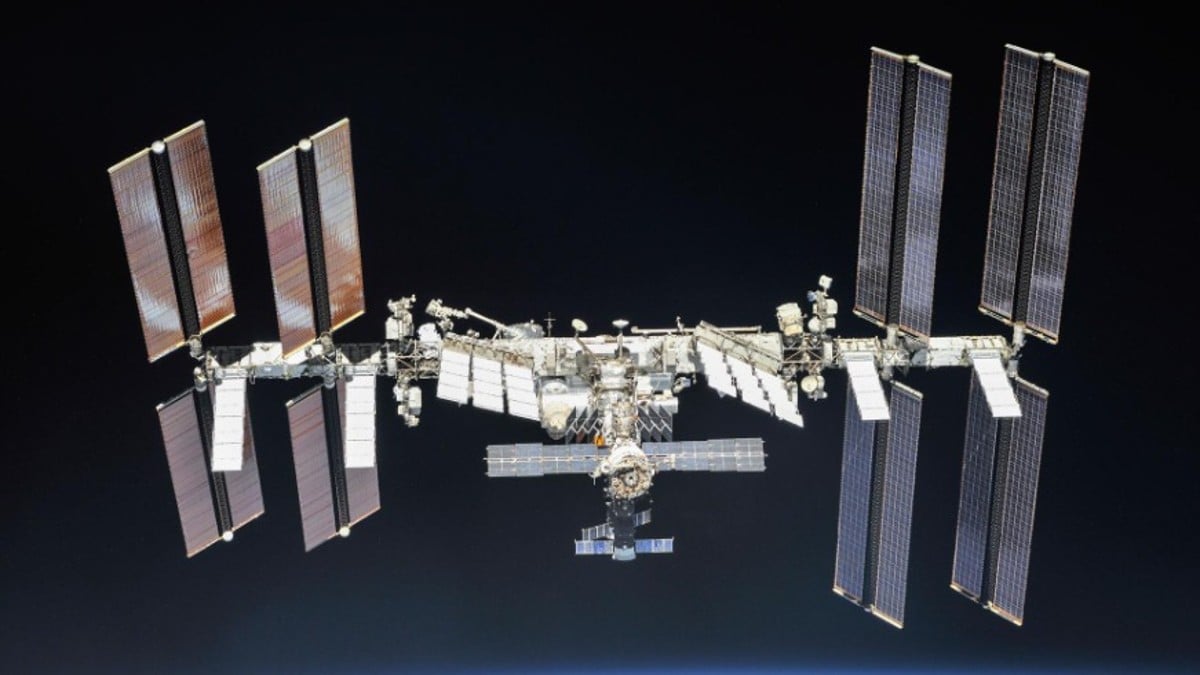A section of the Russian-controlled International Space Station (ISS) has been leaking for several years, letting pressure and air escape. The leak has recently gotten worse, raising questions about both the crew’s safety and the orbiting laboratory’s long-term sustainability. The situation has led to disagreements between the Russian space agency and Nasa officialsread more
For several years, a section of the Russian-controlled International Space Station (ISS) has been leaking, letting pressure and air escape.
The leak has recently gotten worse, raising questions about both the crew’s safety and the orbiting laboratory’s long-term sustainability.
The situation has led to disagreements between the Russian space agency and Nasa officials.
Let’s take a closer look.
The leak
According to reports, the football-field-sized International Space Station has been leaking for the past five years.
The leaks were initially discovered by officials in 2019 in a tunnel that connects the Russian module Zvezda to the docking port that receives spacecraft carrying supplies and cargo.
In July 2000, Roscosmos launched the module into low Earth orbit.
The leak is important because the rotating crew of astronauts needs the space station to be constantly pressurised and filled with breathable gases in order to exist.
In a statement, Nasa informed that the cracks are “very small, not visible with the naked eye and have brackets and pipelines near them, making it difficult to get diagnostic tools into these areas.”
But this year, the rate at which air is being lost has increased to an all-time high. The air is escaping at a rate of 1.7 kilogrammes per day as of April 2024.
Also read:
Is Sunita Williams falling sick amid extended space mission?
The differences
Nasa and Roscosmos are not in agreement about the risk an ongoing leak poses to the space station. They also disagree about the causes and remedies for the leak in the Russian module.
Although Russia cites high cyclic fatigue due to micro-vibrations, Nasa thinks a number of factors, such as pressure, mechanical stress, residual stress, the module’s material characteristics, and exposure to the environment, are involved.
According to the latest report from Nasa’s Officer of Inspector General, the country’s oversight officials believe that this is the most pressing problem facing the space station and that it poses a threat to the crew’s safety.
The US space agency has “expressed concerns about the structural integrity of the (leaking module) and the possibility of a catastrophic failure,” according to former Nasa astronaut Bob Cabana, who chaired the agency’s ISS Advisory Committee during a discussion on the matter on Wednesday.
According to Cabana, Roscosmos has asked that cosmonauts address the problematic areas, but the team “does not believe catastrophic disintegration of the PrK (module) is realistic.”
Cabana stated that the Russians believe that continued operations are safe, however, they are unable to “prove that to our satisfaction.” “And the US believes that it’s not safe, but we can’t prove that to the Russian satisfaction,” he added.
Even after a meeting held in Russia in September of this year, these differences still exist.
Also read:
Could Nasa’s DART mission create the first human-made meteor shower?
Finding middle ground
In the meantime, the US has called for neutral experts from both parties to evaluate this matter in order to assist them in determining the underlying cause.
Cabana asserted that although the US has already taken action to establish its team of experts, Russia has not yet complied with the recommendation.
According to CNN, Nasa and Roscosmos are still in open communication despite their different opinions on the severity of the situation.
“We have a very open and transparent relationship with out Russian cosmonaut compadres,” Barratt said.
Nasa and Roscosmos met to discuss the ISS air leak, with Nasa officials noting that Roscosmos “is confident they will be able to monitor and close the hatch to the Service Module prior to the leak rate reaching an untenable level,” according to a recent report by Nasa’s OIG.
Astronauts and cosmonauts have been instructed to take precautionary measures at the space station, such as keeping the leaking section closed at all times, with the exception of when it may open to offloading goods from spacecraft arriving at a nearby docking port.
However, Nasa astronaut Michael Barratt, who recently returned from the Crew-8 mission after spending over eight months in space, stated on November 8 that they must close the gate that divides the US and Russian parts during this period.
With inputs from agencies
Also read:
Nasa’s Europa Clipper to study life on Jupiter’s moon: Why is it significant?
